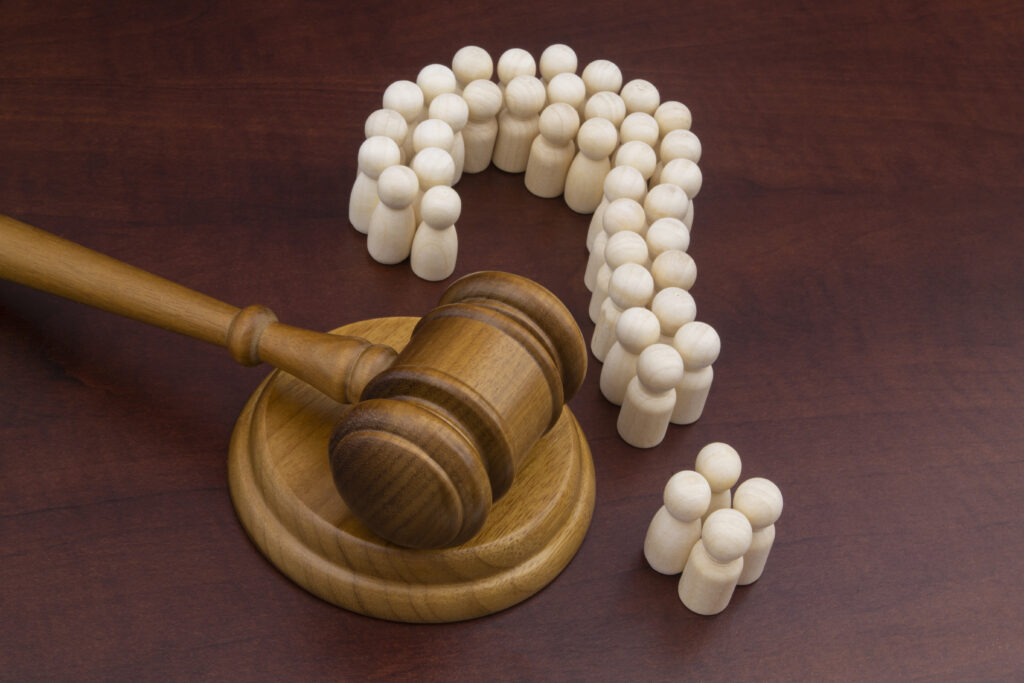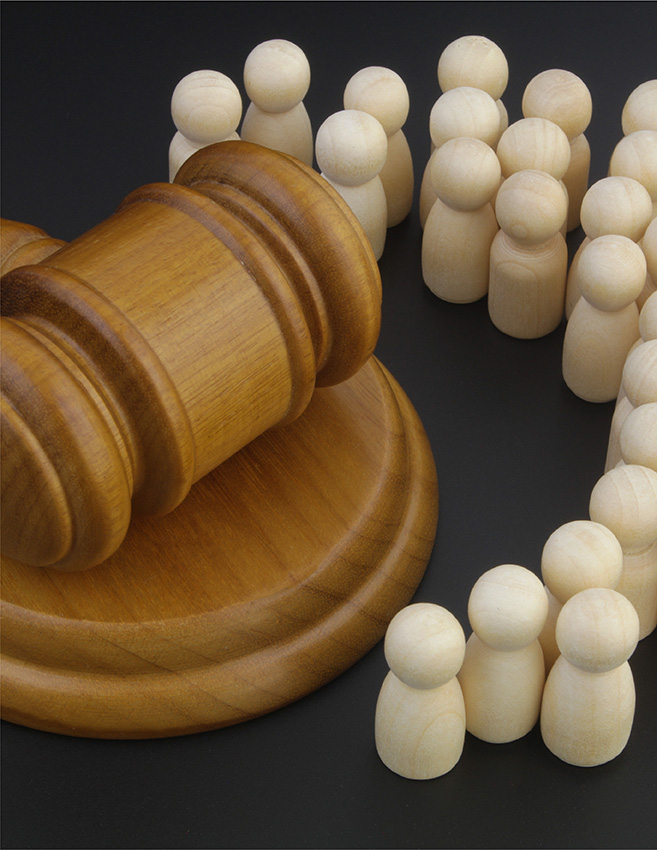The drone industry has continued to grow in recent years in both the commercial and consumer markets. As with the legal regime for any new technology, drone laws need time to evolve as courts, state and federal governments, and legal experts wrestle with how to fit the new possibilities offered by drones into existing legal doctrines.
Drones provide society with numerous benefits and unique ways to solve problems and improve traditional processes – and of course, consumers love them for the fun recreational activities they offer. According to ILR’s research report, Torts of the Future: Drones, drones are revolutionizing a range of industries in innovative ways. Some of those include:
- Helping move lifesaving blood and organ samples between hospitals;
- Conducting automated bridge inspections, which reduces inspection costs and collects data more efficiently.
- Inspecting cell towers and equipment for damage
- Acting as “flying cell sites” to provide emergency cell service;
- Surveying, mapping, crop dusting, and other vital agricultural applications;
- Gathering information using visual and thermal imaging cameras to assist in disaster relief efforts, rescue, and firefighting;
- Changing the way movies are made, offering dramatic shots that simply have not been possible before; and, of course,
- Delivering packages to your front door.
Torts of the Future: Drones argues that as drone lawsuits arise, courts should be able to adapt existing doctrines of law rather than create new legal doctrines specific to one type of technology. Using existing laws will be far more efficient than trying to “create a patchwork of new, drone-specific law that could be inconsistent from jurisdiction to jurisdiction and create conflict with general tort and privacy doctrines.” But while it’s clear that the evolution of tort law will play a key role in how drones get to operate and how the industry evolves, it’s less well known who gets to define these laws and what issues affect how they will be defined. Here is a high-level overview.
Who Will Determine How the Law Deals with Drones?
- FAA Regulation
For decades, the FAA has acted as the nation’s singular airspace regulator, developing comprehensive regulatory regimes for all aspects of manned aircraft operations. Congress has specifically directed the FAA to integrate drones into the national airspace system. Although the FAA has moved the ball forward, the integration process is still ongoing. The FAA’s current rules leave many important questions about the operation of drones unanswered, which has led to some legal uncertainty.
- State Laws
In the absence of clearer direction from the FAA, at least 44 states have enacted drone-related laws since 2013. Some states have additional, non-drone-related laws in place that may alter the way courts apply traditional tort concepts to drones. For example, California’s statutes provide for a reckless endangerment tort that may impact California courts’ analyses of drone-related torts. Given some of the ambiguities in the federal drone regulatory regime, states may continue to perceive the need to act in this area, and the preemptive impact of federal law may not be properly understood by courts.
- Courts
Plaintiffs around the country have brought an array of tort causes of action stemming from incidents involving drones. In grappling with these cases, state and federal courts are developing a body of case law applying traditional tort concepts to this relatively new technology. While the uncertainty surrounding the FAA’s regulatory regime obviously raises issues on the user level, it also ultimately shapes the decisions of courts that must contend with drone-related cases. Often, courts rightly apply existing common law principles in cases involving drones. However, they have, to date, had to do so with only minimal guidance from the FAA based on existing regulations.
- Uniform Law Commission (ULC)
The ULC is an organization that provides states with model legislation in various areas. The ULC has worked on a uniform law addressing tort liability and defenses uniquely associated with the use of aerial drones. Their draft of Tort Law Relating to Drones Act received a lot of criticism but although there has been no further activity since, the ULC is not necessarily out of the drone game. The group could decide to take another stab at a draft law, and its prior work might still influence legislation and court cases going forward.
- American Law Institute (ALI)
The ALI is responsible for publishing various Restatements of the Law. Unlike the ULC, which works to propose new state laws to deal with new technologies or circumstances, the purpose of the Restatements is to capture and explain existing law. Moreover, the influence of Restatements is indirect; they are intended to be used and cited by courts, rather than enacted by legislatures. The ALI is currently in the process of developing the Fourth Restatement of Property, which will likely address the topic of aerial property rights, specifically in the context of drones. Since a revision in the understanding of aerial property rights could help determine when drone use constitutes a trespass, the Restatement’s position will likely play a role in any future development of drone torts.
To find out about more government organizations, think tanks, advocacy groups, and academic organizations who might shape laws relating to drones, read Torts of the Future: Drones.
How Drone Laws Can Look to Tort Laws
- Privacy Torts
Commercial drones utilize cameras and can collect vast quantities of data, either as part of their mission or simply to enable their operator to navigate the airspace. Recreational drone operators often explore the natural world from an eye in the sky. While most drone use is commercial or harmless fun, it is also clear that bad actors can use drones to violate people’s privacy. Currently, there is no comprehensive federal privacy law, whether applicable to drones or otherwise. Public concerns about the use of drones are currently covered by state tort laws.
While the evolution of drone torts stands separate from law enforcement use of drones, the Fourth Amendment issues raised by these uses will likely influence the development of drone torts. Drones stand at the intersection of two potential conflicting views on the Fourth Amendment. For example, drones could be seen as technological advancements that potentially go beyond naked eye surveillance and thus violate the right to privacy when used for surveillance. However, drones are aircraft, which are regulated by the FAA and are becoming more frequently used. More common drone use could lead to the possibility that, so long as operators comply with FAA regulations or the airspace is frequently used, there is no issue with aerial surveillance by a drone.
At the same time, some state legislatures have enacted drone specific privacy laws, such as Florida and Texas. California has also amended its anti-paparazzi law to create a private right of action against a person using a drone to record a person engaging in “private, personal, or familial activity.” In some states, criminal “Peeping Tom” statutes have been used to address drone-related privacy concerns in lieu of private rights of action. Read the report to learn more about drone-related privacy laws.
- Trespass
As drone use has increased and as the sight of drones over a person’s property becomes more commonplace, the concept of trespass is front of mind for many stakeholders. The ability of drones to fly at low altitudes has raised concerns for property owners and property rights advocates and has re-opened debates that were settled long ago in the context of civil aircraft.
The issue of whether an aircraft can “trespass” on the land below was confronted long before the development of the modern drone. These questions first arose with the advent of piloted aircrafts more than a century ago. As man took flight, questions of whether landowners could prevent aircrafts from flying over their land grew heated, with some arguing that airplane operators prior to flight, may need to secure easements or a right to cross one’s land. However, by 1920 this was a clear minority view, given that it would make flying any distance essentially impossible.
In the World War II era case United States v. Causby, the Supreme Court finally addressed this issue, and explained that although ancient common law property rights extended “to the periphery of the universe,” this concept had “no place in the modern world.” Causby established once and for all that the “air is a public highway,” and in so doing recognized that the contours of property rights are tied to technological change. At the same time, Causby also recognized that a property owner could be deprived of their rights if flights were so low and frequent as to deprive the property owner of the use and enjoyment of their land. Of course, small drones are orders of magnitude less intrusive than the piston-engined heavy bombers and fighters at issue in Causby, but the same capabilities that make drones a transformative technology – their ability to fly low, get in close, and do so easily and cheaply – potentially raise new questions about what it means to “interfere” with the use of property. Read more about drone related trespass concerns and the different organizations trying to shape drone laws as they relate to trespassing.
- Negligence
Drones can weigh anywhere from mere ounces to thousands of pounds (though by far the most common civil drones fit below the FAA’s 55 lb. maximum weight for small drones). They can be fast as cars and – like any vehicle — can crash due to environmental factors or user error. Drone operators, whether recreational or commercial, are likely to face increased negligence litigation as the drone industry grows and evolves.
Negligence torts deal with conduct that is below a reasonable standard of care for those around you that causes an injury. Courts across the country are still determining what constitutes “reasonable care” for drone operators. Several plaintiffs have brought lawsuits against drone operators for injuries sustained after drones either fell onto, or were flown into, the plaintiff. Courts may look to other bodies of law to determine the appropriate standard of care. Further on multiple occasions, criminal reckless endangerment charges have been brought against drone operators for operating drones in certain ways and at certain times and places. While the standard for criminally reckless conduct of course will not apply in a civil negligence case, courts may use these criminal reckless endangerment cases as a frame of reference for considering what does and does not constitute reasonable care for purposes of drone-related negligence lawsuits. At least one defendant has been convicted of disorderly conduct after being found reckless by a jury for failing to comply with the FAA’s line of sight requirements.
As you can see, there are a wide range of issues surrounding the use of drones as well as many organizations trying to shape the laws that apply to drones. Drone torts are evolving, but that does not mean new and specific rules that only apply to drones need to be created. As courts hear more of these cases, they should be able to use established principles to drone technology. Doing so is vastly preferable to trying to create a patchwork of new, drone-specific law that could be inconsistent from jurisdiction to jurisdiction and create conflict with general tort and privacy doctrines. Finally, additional guidance from the FAA may be helpful in helping courts, legislatures, and drone operators understand the overriding national interest in ensuring safe and efficient use of the airspace.



